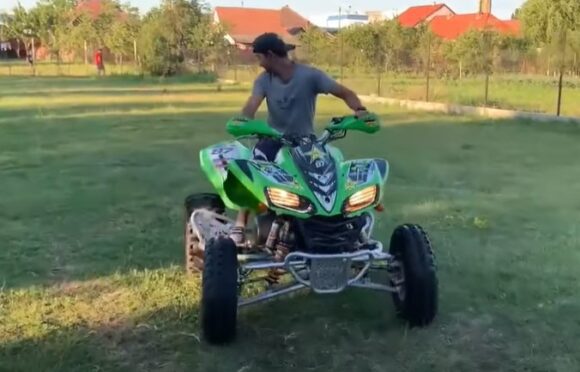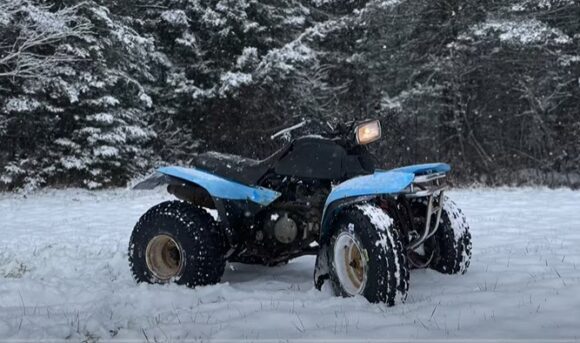The Arctic CAT is undoubtedly some of the top choices and the DVX 400 has a nice place for beginners. Similar to any other ATV, be used or new, it has some problems too.
Depending on the model, condition, age, and maintenance, there are both common and uncommon problems in Arctic Cat DVX 400.
Common Arctic Cat DVX 400 Problems include the ATV won’t start, won’t accelerating, problems with fuel mixing in the combustion chamber, and gradual problems in rings or pistons in 2005 to 2007 models after certain kilometres and mud rides.
Some other issues like choke problems, gas leakage from the carburetor, problems with spark plugs, fuel tank mixed with water, and a few more little problems.
Let’s see all these Arctic Cat DVX 400 Problems with fixes to each. So, if you get any of these issues with your DVX 400, you may know the fix already.
Arctic Cat DVX 400 Problems
Here are some of the most common and a couple of uncommon problems in Arctic Cat DVX 400 you may get.
1. Starting out Problem
The most common problem which every second DVX 400 user may get is problems when starting it. Well, this is the problem of every Quad out there, DVX 400 isn’t generally special in it. However, this “starting” problem is a bit unique in this quad.
Normally, an ATV not starting has a reason for a worn-out spark plug or leakage in the carburetor or quality of fuel.
In DVX 400, the starting problem certainly or more frequently occurs due to riding it on dense mud and water, causing compression and the fuel chamber to block and not getting fuel or air mixture while compression.
To fix this problem in DVX 400, you might need to look into many things. The first thing I would look into is if the engine is getting gas or not.
If an engine fails to get gas responsively or not on time, it won’t start. By that, we don’t mean your tank must be running out of fuel. Instead, it could have a full tank but the plug isn’t getting fuel enough or at all.
Check the fuel, its compression valves and see if it works. If it doesn’t, head over to the carburetor and clean it. Make sure to remove the Jets from the Carburetors before you start cleaning them. It is an effective way to clean.
Most probably, it’s loaded with mud and unable to provide a perfect air and fuel mixture to the engine, preventing combustion. Replacing or cleaning it would completely restore it.
2. Worn Out Valves and Vacuum Hoses
Still related to the “Starting Problem” with another serious problem causing your quad not to start properly.
If you make sure the spark plug, carburetor, and fuel quality sort of things all are in working condition, but the ATV is still not starting, there is a problem with the Valves of DVX 400.
In DVX 400, this is a common problem due to some technical reasons. Sometimes, when you ride on muddy tracks or pressure wash your machine, the rubber hoses disconnect, cutting the vacuum needs and resulting in failure to start the engine.
Just make sure that all of its 3 hoses are connected to the carb from the tank so you can get the gas to let it start. If it was disconnected, just connect them and replace/repair any damaged hose.
Also, put a nice quality O-Ring rubber to block any gap in the vacuum. Same for the cylinders and pistons if the gasket is not in great condition anymore.
If you still could not start it, the problem is now worse since it’s a problem with the rings and piston of the engine. As they are not doing their job in sync, either due to any damage to the ring or cylinder bore.
You might also need to replace the rings if they got damaged. But, if they aren’t, just use them again and don’t replace them as they are costly. Also, check the compression again.
3. Dying Engine and Fuel Problems
The second common problem I noted Arctic Cat DVX 400 users are facing is the Engine dying when they touch the throttle. Or similar to it, the machine is not running but on Full choke or at PRI Prime Reserve.
In both these cases, your engine is at a huge risk no matter if your bike is started somehow.
PRI or full choke is a temporary solution to start an engine. It gets the carburetor and plugs enough fuel and bypasses the vacuum. But, if you are heavily relying on it, you are ruining your engine and exhaust and it’s a problem that needs to be fixed ASAP.
This happens when you ride in the water and your engine is not completely dry. Another possibility, the engine is not getting enough vacuum due to a bad carburetor or water in its gas cap or cylinder restricting the flow of fuel.
In this case, drain all the gas from the tank into a container, get the spark plug out and carburetor to clean, and choke any air from coming in when you next start it.
This time, don’t use the gas you just collected. Instead, get new fuel from a reliable station and put that in. The fuel quality can be a deal breaker sometimes.
Make sure to thoroughly check the carb, plug, valves, leakage in the intake boot, tank, fuel petcock, fuel quality, and connection of hoses.
You might need to replace any or some of these to get your machine back to life. Try to adjust the idle screw at 1/8th a turn.
4. Seat Quality and Plastics
Besides technical problems in this machine, there are some other problems like seating comfort and plastic quality affecting your experience.
As far as plastics, this is a very common problem in ATVs to break quickly. Since it’s an offroad vehicle with muddy tracks, the plastics aren’t supposed to last for long.
The fender and heel guards are not built up to the mark.
The same goes for its seating which is not so comfortable. You might not be able to comfortably sit for hours unless you get additional cushioning pads.
Replacing them is an option but it is a little on the expensive side.
But yes, it has some personal preferences too. Maybe you like its seat and someone else may not like it.
Note: DVX 400, LT400 of Suzuki, and Kawasaki KFX400, all are the same in specs, performance, and technical aspects with very few or minor differences in plastics.
So, don’t be confused if you find any of these terms interchangeable.
Arctic Cat Prowler 650 Problems
Arctic Cat Alterra 700 Problems


